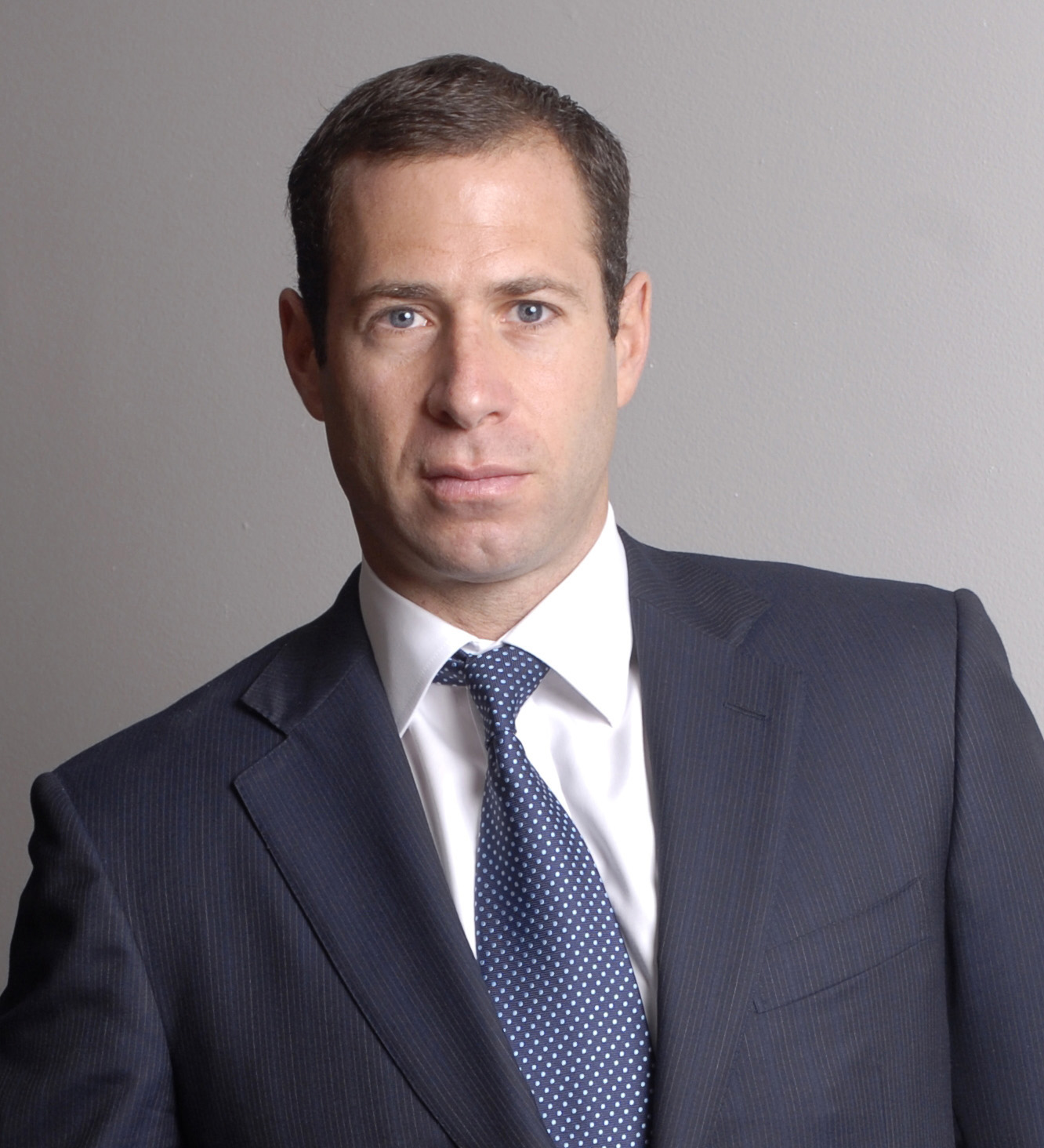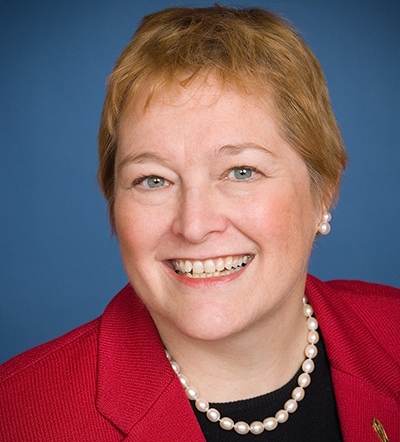The Best and Worst Cities for Investment
CPE's September Special Report gives a mid-year update on the top options for reward over risk and what to avoid.
A Mid-Year Update on the Top Options for Reward Over Risk—and What to Avoid
By Suzann D. Silverman, Editorial Director
Just when investors were feeling good again about commercial real estate, the economy took a turn for the unpredictable, and the political climate has only piled on some extra insecurity. Good investment opportunities can still be found, but the list of likely locations has changed. CPE examines the latest research findings and offers insights into the investment strategies of some of the most active players on the current field.
After warming to the capital markets for the past couple of years, investors have been more cautious in 2012 in the face of renewed economic volatility triggered by European unrest, anticipated year-end tax policy issues and suspense over the November elections. That has resulted in something of a paradox: a slowing rate of investment accompanied by increasing sales volume. During the first half of 2012, 7,590 properties traded hands for a total of $108.8 billion, according to Real Capital Analytics Inc. That represents a 1 percent drop in the number of transactions, but a 4 percent increase in their aggregate value, compared to the same period in 2011.
Assets for sale remain limited, which has increased competition for solid prospects in key markets, and that combined with economic uncertainty has led investors to further reduce their return expectations. That is likely to remain the norm for at least the near future, as returns—already in the 8 to 10 percent range—promise to decline even further over the next couple of years, according to Ryan Severino, senior economist for REIS Inc.
But while caution is tempering the risk-reward quotient, it appears to be redirecting investment, not stalling it entirely. Indeed, those players that are active are embracing opportunity—and finding it in new places.
While apartments have a well-earned reputation as the darling of the recessionary marketplace, it is the office sector that has actually been topping property categories by volume for the past two-and-a-half years on the strength of large institutional deals. That changed only in the second quarter of 2012, when apartments took first place for the first time in 10 quarters, netting $17.1 billion in volume as opposed to $16.3 billion for office, noted Marisha Clinton, director of research for the capital markets at Jones Lang LaSalle Inc. The switch resulted from a combination of events: an increase in financing from the government -sponsored enterprises, the availability of distressed apartment assets and investors’ sense of diminished possibilities in the office sector.
Industrial properties are also gaining in popularity, as evidenced in a mid-year update to the annual “Emerging Trends in Real Estate” report produced by PricewaterhouseCoopers L.L.P. and the Urban Land Institute. “People believe they’re going to see more manufacturing in the United States,” observed Chuck DiRocco, director of real estate research for PricewaterhouseCoopers.
Development has picked up slightly, but the improvement is largely limited to apartment properties and will likely remain minimal over the next few years, according to Severino. “You won’t see a glut necessarily, but you will see significantly more additions to inventory over the next couple years,” he said. “Demand is so strong, as (product) comes online it will be absorbed.”
Top Prospects
Development targets remain limited to larger markets, but that is to be expected, as investors continue to view those markets as the best places to buy assets, as well. That said, more investors are studying secondary markets—and to a smaller degree tertiary markets—as they find themselves priced out of top-tier cities. The office sector offers a case in point: In the first quarter of 2012, primary markets saw 59 percent of office sales, but that dropped to 53 percent in the second quarter, according to Jones Lang LaSalle statistics. And in the first half of 2012, primary markets tallied 53 percent of office transactions, down from 58 percent over the same period last year.
“About 12 months ago, we started to see a shift in momentum from the major cities to secondary cities,” noted Dan Fasulo, managing director for Real Capital Analytics. “The big year-over-year gains in activity are definitely in more secondary locations.” He listed among them Seattle, Miami, Charlotte, Baltimore, Austin, Nashville, Hawaii and Broward County, Fla. To that list, Severino added San Jose, San Francisco, Raleigh-Durham and Houston.
Such locations feature strong bases in growth industries, most notably technology, energy, education and healthcare. These economic drivers promise further influxes of new companies and new employees, suggesting potential for increased real estate liquidity and thus greater return on investment.
In the six months from year-end 2011 to mid-year 2012, Seattle, Phoenix and San Jose all entered the top 10 on Real Capital Anal-ytics’ ranking of markets by sales volume (see chart at right). San Francisco rose from eighth to fourth, reflecting its continued recovery, but at the same time technology companies are bypassing its more expensive digs in favor of cheaper opportunities for creative space in downtown Seattle, noted Richard Mack, North America CEO for AREA Property Partners.
Seattle, in fact, experienced a 148 percent increase in volume between the first half of 2011 and the first half of 2012, Clinton noted. San Francisco’s volume also increased, but by a much smaller 8.9 percent during that time (the long-suffering city did register a significant uptick in 2011, however, with volume increasing 312 percent year-over-year in the first half). Technology-driven San Jose grew by 65.9 percent, and Phoenix’s education and leisure markets helped take its commercial real estate transaction volume up by 44.8 percent. Phoenix has been experiencing both corporate and individual in-migration from California, DiRocco noted.
Other fast-growing newcomers to the investment scene include Charlotte and Denver. Charlotte has seen “consistent positive growth,” Clinton observed, thanks to an influx of capital driven by stability in the finance and banking sector, as well as growth in energy. While it ranked only 13th on Jones Lang LaSalle’s list of top-growing cities by investment volume (at $1.9 billion) and 20th on Real Capital Analytics’ list (at $1.6 billion), the pace of its growth is extraordinary: a 163 percent year-over-year jump for the first half of 2012, following a 175.5 percent increase during the same period last year, according to Jones Lang LaSalle.
Denver, too, is seeing something of a rebirth, thanks to the strong energy market. Investment sales grew 27 percent in the first half of the year, according to Jones Lang LaSalle data; both Jones Lang LaSalle and Real Capital Analytics ranked it 12th, with $2.3 billion in volume.
“In spite of economic volatility, investors continue to favor safe havens,” observed Clinton.
Perennial favorites like New York, Boston, Dallas, Houston and Los Angeles remain among the top picks, although their performance has not been as robust as investors have focused on less expensive markets. Prices in the six biggest markets have returned to the pre-recession levels of 2007, DiRocco noted, driven by intense competition. That can make it difficult to justify cap rates—an issue that will only intensify in a few years, when inevitable interest rate increases apply upward pressure to cap rates, Severino said. “That’s a pretty big risk, buying at low cap rates.”
Manhattan, in fact, saw an 11 percent decrease in volume in the first half, and Los Angeles’ volume dropped by 14 percent, according to Real Capital Analytics. In Manhattan, “(investors are) going to have to draw the line at some point on prices,” DiRocco said, pointing out that 5 and sub-5 cap rates “might just be too much.” He does not believe fundamentals will support prices as they did in 2007. On the other hand, certain submarkets offer greater opportunity than others, noted Clinton, pointing to growth in Lower Manhattan and Midtown South.
Down but Not Out
Other big cities offer a mix of recovery and reduction that has attracted a few investors but is largely keeping them at bay.
The biggest surprise has come from the nation’s capital. Parts of Washington, D.C., continue to offer opportunity, including NoMa (North of Massachusetts Avenue) and City Center, according to Clinton. But the longtime stalwart, perennially considered recession-proof, has lost much of its following this year, thanks to government cutbacks and fear of resultant reductions in business for government contractors. Already, they have shifted to 30- to 60-day continuances rather than the multi-year contracts they previously held, Clinton noted. Overall, investment volume dropped by 16 percent in the first half over the same time last year, with the office sector down 29 percent.
Fasulo found an even greater drop, at 33 percent overall. “Regardless of which administration gets in next year, the public’s appetite for expanding government is at an end, so we’re not going to see any major expansions in government anymore,” he said.
Miami gained followers among Emerging Trends respondents but still represents risk, according to DiRocco. While terming it “a decent market to look at,” he noted that job growth is expected to rise by only about 20 basis points next year—not much of an improvement, considering that the market is still almost 70,000 jobs short of its pre-recession peak. Meanwhile, the housing market continues to be soft, despite reduced completions, he warned.
Las Vegas is still risky for investors, DiRocco added, and while Detroit showed increased interest among investors at mid-year and is “starting to show some signs of life,” it still has a long way to go.
David Gilbert
Chief Investment Officer
& Head of Acquisitions
Clarion Partners
Strong employment growth is primarily in technology, energy and healthcare, while government, finance and construction remain weak. Consequently, San Francisco, San Jose, Seattle, Houston, Austin and Raleigh are high on our target market list, driven by high-growth industries. At this stage of the recovery cycle, we are concentrating on the apartment and industrial sectors. Generally, the greatest opportunities are in a value-add strategy and urban apartment ground-up development. We recently completed several warehouse acquisitions in strategic distribution markets like the Inland Empire, Miami and Northeast Pennsylvania. We also purchased a number of prime office assets in select CBDs including San Francisco, West Los Angeles and Houston.
Debra Cafaro
 Chairman & CEO
Chairman & CEO
Ventas
We are investing in high-quality, private-pay senior living communities and medical office buildings (MOBs) located in the top MSAs because they offer investors core characteristics of good, reliable growth with resiliency in a downturn at above-core returns. In our MOB portfolio, 94 percent of our assets are on campus or affiliated with top hospitals and healthcare systems, and that remains the focus of our investment strategy. In our private-pay seniors housing portfolio of 214 communities managed by Sunrise Senior Living and Atria Senior Living, net operating income increased in the high single digits. Our second-quarter acquisition of 16 communities from Sunrise
Senior Living for $362 million includes
locations in top MSAs.
Patti Morris
Chief Real Estate Officer
Wells Real Estate Funds
Wells believes in the core investment strategy and continues to invest in institutional-quality real estate, targeting Class A office and industrial buildings with strong credit tenants diversified by industry and long-term leases. We target primary and secondary markets and are particularly interested in cities with historical/expanding industries, such as energy and technology. These cities typically have a well-educated workforce with solid secondary and post-graduate university systems. They have strong and improving infrastructure that includes public transportation and interstate systems, offering a quality lifestyle for young professionals. We have seen these trends in the major coastal cities but are also seeing improvement in the larger inland cities.
David Dowell
 Director
Director
The Praedium Group
We prefer primary and secondary markets with barriers to entry and proven job drivers, a strategy that has only become more important. We see opportunities to buy into growth (multi-family) or buy at attractive discounts (distressed), in combination with value-add strategies to increase cash flows through capital investment and operational execution. We look for multi-family opportunities that have attractive cash-on-cash returns, are the most efficient asset class to finance, are highly liquid (even in secondary markets) and have strong leasing demand growth. We do not invest in tertiary markets. Recent deals include the Alexandria Portfolio outside Washington, D.C.; The Residences at the Collection in Carrollton, Texas; and 33 North in San Rafael, Calif.
Indraneel Karlekar
Executive Vice President & Chief Investment Strategist
Cole Real Estate Investments
Regional patterns of economic growth have historically proven to be significant drivers of demand for commercial real estate. In the current economic cycle, industries exposed to technology and commodities are generating strong economic growth in certain regions, strengthening those commercial real estate markets. Markets with exposure to technology-oriented industries—like Seattle, San Francisco, Austin, Raleigh and Boston; cities with exposure to commodity industries, such as Dallas, Houston and Oklahoma City; or both, as in the case of Denver—could be strong performers. Meanwhile, Phoenix, which attributed much of its pre-recession economic growth to housing, continues to lag behind.
Rodney Richerson
 Regional President
Regional President
KBS Realty Advisors
We typically are looking at the major growth markets across the country for our core real estate investments, with an eye on job growth, population growth, business growth and a variety of other indicators. We also operate an opportunity fund that has been very active securing value-add and opportunistic deals in markets that may not be at the top of our list for well-leased core investments. We will buy an underperforming asset in a tertiary market if the opportunity is right. We are a little hesitant to say which markets carry risk, because where there is risk there can also be great reward. KBS has completed approximately $520 million in acquisition volume since January of this year, and we hope to double that by year-end.
Richard Mack
North America CEO
AREA Property Partners
We are looking for mid-teens levered IRRs with levered cash-on-cash yields in the high single/low double digits. While we have generally been sellers of core office buildings in gateway cities, we have been buyers of other asset classes in non-gateway major markets in the United States that exhibit the same or better job growth but fewer barriers to entry. In many cases, you’re still able to buy well enough below replacement cost in markets like Houston, Dallas and Austin that increasing supply will have a lower impact. Job growth in these markets is driven by some or all of the currently strong U.S. industries: healthcare, education, energy and technology. We’re also relatively bullish on South Florida. We have been net sellers of office in San Francisco and New York.
Peter DiCorpo
 President of the Managed Accounts Group
President of the Managed Accounts Group
CBRE Global Investors
Many of our collective clients are still quite interested and quite engaged in markets like New York, San Francisco, Boston, D.C. We’re looking at them, but we’re taking a very cautious approach to them. We’re typically much more focused these days on what we’ve defined as the next-tier cities, cities that have strong fundamentals in terms of rent growth, occupancy and a limited new pipeline of product but aren’t necessarily getting the same level of hype and attention that the trophy cities are getting. These are cities like Austin, Denver, Dallas, Houston, San Diego and Seattle. Energy is obviously very important within some of those major areas. Technology is also very important. And those markets aren’t as overheated.
Kevin Smith
Head of U.S. Business
& Co-Manager of the
PRISA Fund, Prudential
Real Estate Investors
We divide our investing thinking into two different types of markets: longer-term markets, typically markets where there are greater barriers to new supply and a higher level of human capital, a higher level of education, maybe a more entrepreneurial type of people. We think that, long term, those are the markets that are going to drive more job growth. The San Francisco Bay area, New York, Boston, Seattle, Washington, D.C., and San Diego are all examples. The other side would be what I think of as trading markets. Those markets will typically grow more quickly. Most are in the Southeast and Southwest. They’ve got more growth in population and jobs, but they typically have fewer limits on new supply.
 Bob Plumb
Bob Plumb
Managing Director
Direct Investment and Group Acquisitions, AEW Capital Management L.P.
We use five criteria that we think are really important to be successful in real estate investment. We invest in what we like to call peak-to-peak rental growth markets: markets where there are supply constraints, physical barriers, governmental and legal restrictions, and economic factors that work to keep a market at equilibrium and allow for absolute growth in rent. We also want to invest in markets with educated populations and strong job growth, in markets and properties that will see investment in emerging technologies and industries, as well as those that will benefit from changes in governmental expenditure. And we want to be diversified—not by market and product type but from an economic perspective.
Martha Peyton
Head of Global Real Estate Strategy and Research
TIAA-CREF
We remain largely focused on core properties, with selective interest in value-add and development opportunities. To date, only the six “major” markets comprising Boston, Chicago, Los Angeles, New York, San Francisco and Washington, D.C., have shown material recovery in property values, with improvement focused on the best-quality and most desirable locations. We consider historical investment performance. We also evaluate the composition of the investible property universe in each market and its attractiveness to an increasingly globalized investor community. We see coastal markets as offering the strongest supply and demand factors that contribute to investment performance.







You must be logged in to post a comment.